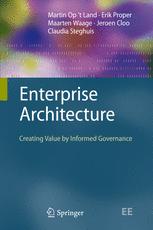

Most ebook files are in PDF format, so you can easily read them using various software such as Foxit Reader or directly on the Google Chrome browser.
Some ebook files are released by publishers in other formats such as .awz, .mobi, .epub, .fb2, etc. You may need to install specific software to read these formats on mobile/PC, such as Calibre.
Please read the tutorial at this link: https://ebookbell.com/faq
We offer FREE conversion to the popular formats you request; however, this may take some time. Therefore, right after payment, please email us, and we will try to provide the service as quickly as possible.
For some exceptional file formats or broken links (if any), please refrain from opening any disputes. Instead, email us first, and we will try to assist within a maximum of 6 hours.
EbookBell Team

5.0
38 reviewsTwenty years after the first publications and books on enterprise architecture, the domain is evolving from a technology-driven towards a more business-driven approach, thus empowering decision makers to adapt and transform an enterprise in order to keep up with changing business needs. At the same time the discipline of enterprise architecting has matured, leading to a better understanding of the profession of an enterprise architect.
With this book, the authors aim to provide an overview of enterprise architecture including the process of creating, applying and maintaining it, thus taking into account the perspectives of CxOs, business managers, enterprise architects, solution architects, designers and engineers. They explore the results that are produced as part of an enterprise architecture, the process by which these are produced, and the role the architect plays in this process. As such, they do not describe a specific method for developing an enterprise (IT) architecture, nor do they define a specific modeling language for enterprise architecture, rather they offer the reader a fundamental way of thinking about enterprise architecture, which will enable him to select and apply the right approach, architecture framework and tools that meet the objective and context of the architecture work at hand. This approach is emphasized by discussion statements at the end of each chapter, sparking thoughts about benefits, shortcomings, and future research directions.
Covering both theoretical foundations and practical use, and written in close collaboration between industry professionals and academic lecturers, Enterprise Architecture thus offers an ideal introduction for students in areas like business information systems or management science, as well as guidance and background for professionals seeking a more thorough understanding of their field of work.